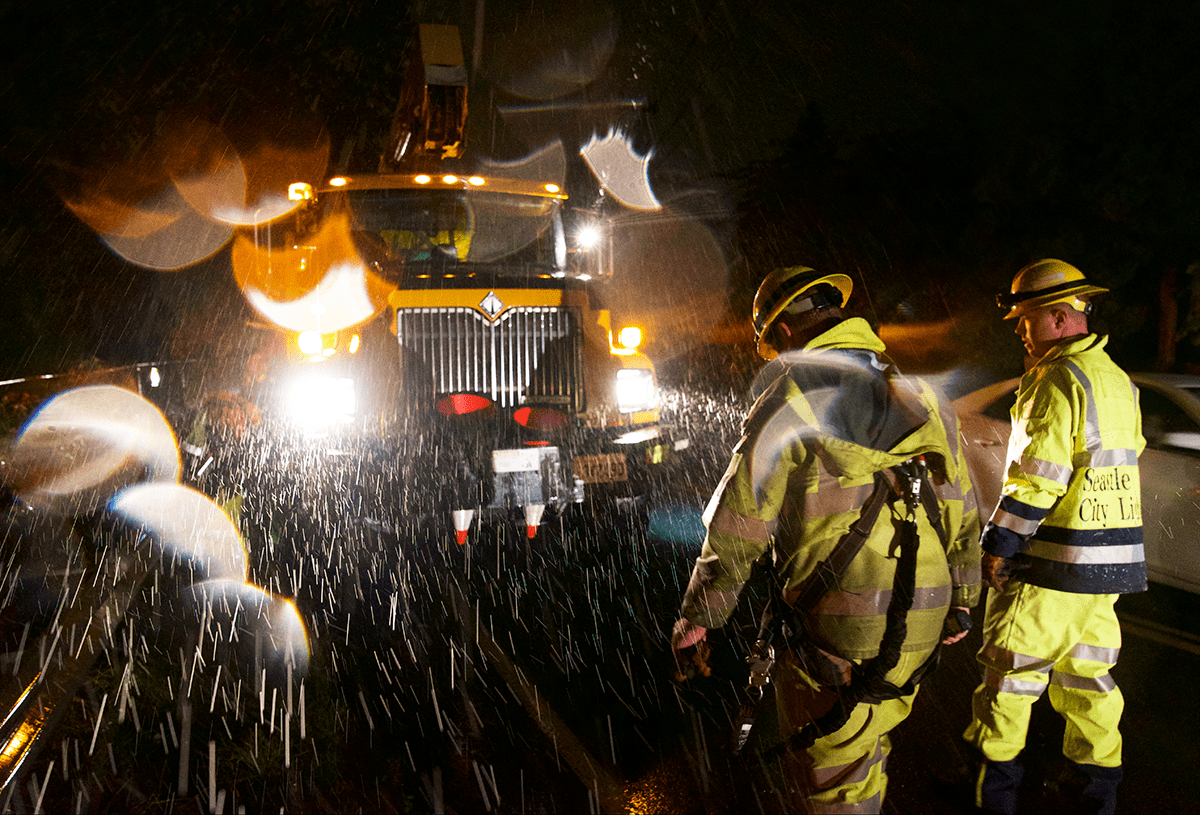
Translated versions of these tips:
አማርኛ | 한국인 | Español | Tagalog | 中國人 | Tiếng Việt | Soomaali
It’s that time of the year when the weather can go from bright and sunny to dark and stormy in a matter of minutes. Inclement weather like windstorms and heavy snow can result in power outages in our area. We have a few tips and resources for how you can prepare and keep your family comfortable, informed, and most importantly, safe this season.
Have a kit ready
Make a pack that will last for at least seven days. Don’t forget about your pets too! For tips on what you need, visit seattle.gov/emergency-management/prepare.
Stay informed
Check the City Light outage map for current information about any outages in your neighborhood and surrounding areas. You can also follow Seattle City Light on Twitter or Facebook for updates.
Be sure to sign up for emergency notifications via text for your area.
- AlertSeattle: alert.seattle.gov
- Alert King County: kingcounty.gov/ALERTKingCounty
Sign up for our Life Support Program
If someone in your home is dependent on this equipment, we provide assistance to help you maintain safety during planned and unplanned outages through the Life Support Equipment Program. For more information about this program and tips for managing outages with life support equipment, visit seattle.gov/city-light/life-support.
Never use gas or charcoal grills indoors
In a power outage, never use gas grills, charcoal grills, or BBQs inside the home or in a garage. The exhaust fumes can be deadly in enclosed spaces. Install a carbon monoxide detector in your home to avoid illness or even death from carbon monoxide poisoning.
Keep generators away from your home
While generators can be effective during a power outage, they need to be used with care. Always use portable generators outside in well-ventilated areas.
Stay away from downed power lines
Stay at least 30 feet away from a downed power line and call 911 to report them.
Assess your trees
With most of the leaves fallen, now is a great time to examine the structure of your trees. Look up and identify broken or cracked branches that could fall during a windstorm. If your trees could cause safety problems with power lines, fill out our tree form or call (206) 386-1733.
We are committed to restoring power to our customers as quickly and as safely as possible while keeping our crews safe. For more information about how to prepare before, during, and after a power outage, visit our outage page.